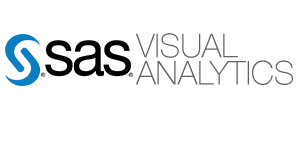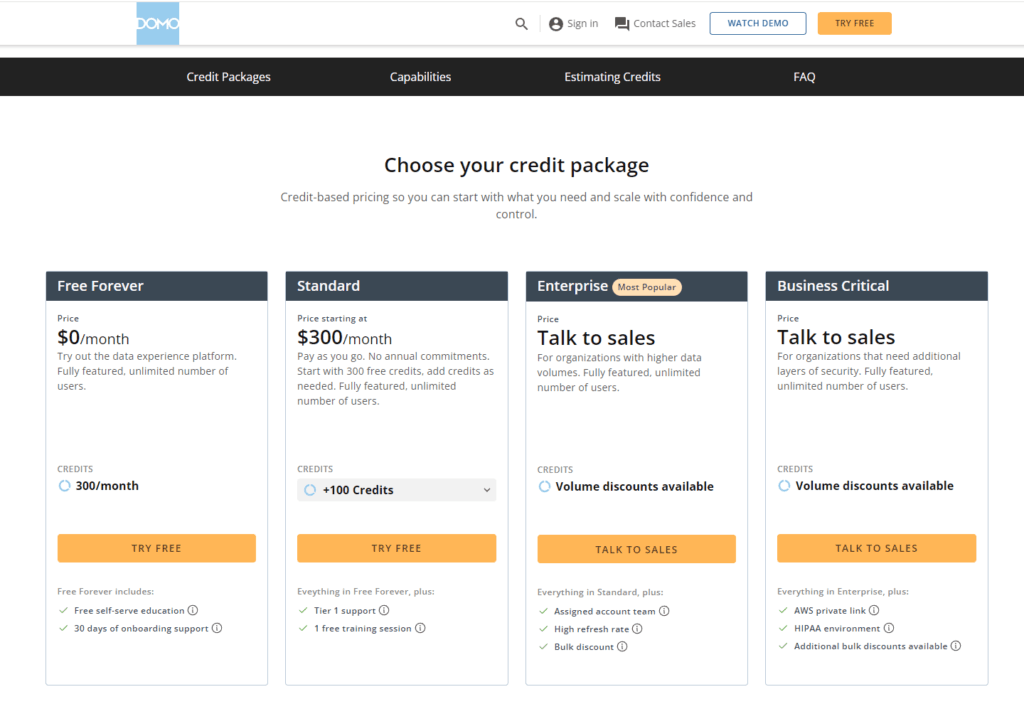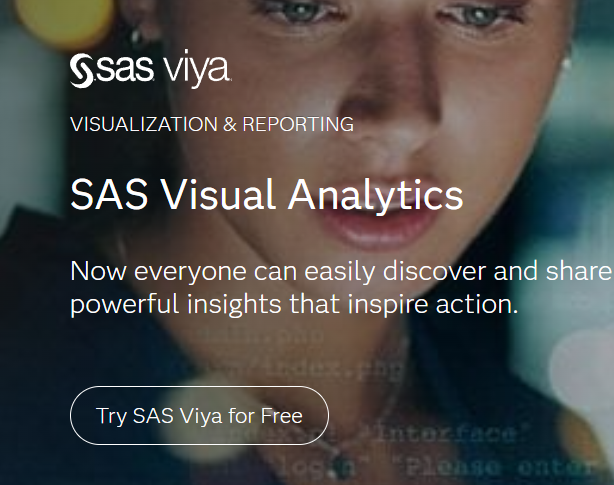In the bustling metropolis of data analytics, choosing the right tool can feel like finding your way without a map. Among the myriad options, Domo and SAS Visual Analytics stand out as two towering landmarks, each offering unique pathways to insights and understanding. But which path leads to the treasure trove of data-driven decision-making suited for your business needs? Whether you’re charting unknown territories or looking to refine your journey, navigating the features, strengths, and nuances of Domo and SAS Visual Analytics is essential. Let’s embark on this exploration, beginning with one critical aspect that often decides the course of the voyage
| Domo | SAS Visual Analytics |
|---|---|
 |  |
| G2 Score – 4.4 out of 5 stars | G2 Score – 4.4 out of 5 stars |
| TrustRadius Score – 8.5/10 | TrustRadius Score – 8.4/10 |
Ease of Use and User Experience
The journey through data analytics should be an enlightening one, not fraught with unnecessary complexities. The ease of use and overall user experience offered by an analytics tool can significantly impact an organization’s ability to harness data effectively. Let’s delve into how Domo and SAS Visual Analytics cater to their navigators, guiding them through seas of data to the shores of insights.
Domo: Crafting an Intuitive Data Landscape
Domo is akin to a modern metropolis, designed with user navigation and accessibility at its forefront. It prides itself on creating an environment where data analytics is not just a task for the few but a part of the daily routine for many. The platform achieves this through a combination of a clean, intuitive interface and a user experience that guides individuals through the analytics process step by step.
From the moment users log in, Domo presents a landscape where data sources, visualizations, and insights coalesce in a harmonious dashboard, making complex data sets approachable. This approachability is crucial in encouraging users with varying degrees of technical expertise to explore data confidently. Domo’s design philosophy extends to its data manipulation tools, which are built to simplify tasks that traditionally required advanced knowledge, thus empowering users to contribute insights without the steep learning curve often associated with data analytics.
The essence of Domo’s user experience lies in its ability to make the complex simple, turning the vast and often intimidating world of data analytics into a navigable cityscape, filled with insights waiting to be discovered at every corner.
SAS Visual Analytics: Navigating the Depths with Precision
SAS Visual Analytics, in contrast, resembles a well-organized library, rich with information and designed for deep exploration. It caters to users who seek not just to visit this library but to immerse themselves in its volumes, uncovering layers of insights through precise and detailed analysis. The platform combines the robust analytical capabilities SAS is known for with a user interface that balances complexity with navigability.
Users are welcomed into an environment where data’s depth can be explored through interactive visualizations, dynamic reports, and sophisticated analytical models. SAS Visual Analytics encourages a hands-on approach to data, inviting users to dive deep into their analysis, armed with tools designed for precision. This depth does not come at the expense of accessibility, however; the platform offers guided analytics, natural language queries, and automated insights to help users uncover patterns and trends within their data, regardless of their technical background.
The platform’s strength lies in providing a structured path through the data analytics process, ensuring that users can navigate the depths of their data with confidence and precision. This structured exploration makes SAS Visual Analytics a powerful tool for organizations that rely on detailed, data-driven strategies.
Data Integration and Management
In the realm of analytics, the journey of data from its raw form to actionable insights involves several critical steps. The ease with which these steps are managed and the depth of integration capabilities available can significantly impact the overall utility and effectiveness of an analytics platform.
Domo: The Agile Data Conductor
Domo is engineered to act as an agile conductor of data, harmonizing diverse data sources into a cohesive analytics symphony. With its cloud-native infrastructure, Domo excels in integrating data from a myriad of sources, be it cloud applications, databases, spreadsheets, or even real-time data streams. This extensive connectivity is designed to simplify the data aggregation process, making it more accessible for businesses of all sizes to bring their data together in one place.
Once data finds its way into Domo, the platform doesn’t just store it; it transforms it. Domo offers a suite of tools aimed at making data management tasks—such as cleaning, transforming, and enriching data—as intuitive as possible. The platform employs a visually driven approach to these tasks, allowing users with varying levels of technical expertise to participate in data preparation processes. This not only democratizes data management across the organization but also accelerates the path from data collection to insight generation, ensuring that decisions are always grounded in the most current and accurate data available.
SAS Visual Analytics: The Deep Data Explorer
SAS Visual Analytics, on the other hand, approaches data integration and management with the depth and precision of a seasoned explorer. It is built on SAS’s robust analytics heritage, offering powerful tools for handling complex data scenarios. The platform’s strength lies in its ability to dive deep into data, providing granular control over every aspect of the data preparation process.
SAS Visual Analytics supports comprehensive data integration capabilities, enabling organizations to pull in data from across their operational landscape. This includes not just traditional data sources but also more complex structures like unstructured data, giving users a 360-degree view of their informational assets. Once integrated, SAS provides sophisticated tools for data management, allowing for intricate manipulation and preparation of data. This ensures that analysts can refine their datasets to the exact specifications required for advanced analytics tasks, though it requires a higher level of technical skill to navigate effectively.

Related: Check out our free SEO suite

Collaboration and Sharing Capabilities
The power of data is fully realized when it can be easily shared and understood across teams and departments. Collaboration and sharing capabilities in an analytics platform can transform data from a siloed asset into a shared resource that drives collective action and strategic alignment.
Domo: Fostering a Culture of Connected Insights
Domo is designed with the ethos that insights should flow freely across an organization, breaking down barriers that traditionally siloed data within departments. Its platform acts as a conduit for collaboration, enabling users to share dashboards and reports with ease, akin to sharing content on social media platforms. This approach democratizes data, ensuring that valuable insights are accessible to all, from the boardroom to the front lines, fostering a culture where data-driven decisions are the norm rather than the exception.
The platform enhances collaborative efforts through interactive features that allow users to not only view but also interact with shared insights, ask questions, and offer annotations directly within the shared view. This level of engagement ensures that insights lead to dialogue, debate, and ultimately, consensus, driving forward collective action. Furthermore, Domo’s mobile capabilities ensure that this collaborative environment extends beyond the confines of the office, allowing team members to stay connected and informed no matter where they are.
SAS Visual Analytics: Empowering Data-Driven Teams
SAS Visual Analytics places a strong emphasis on empowering teams to collaborate through data. It offers a robust environment for creating and sharing interactive reports and dashboards that can serve as focal points for team discussions, strategy sessions, and decision-making processes. The platform’s strength lies in its ability to not only disseminate data but to do so in a way that invites exploration and interaction, encouraging users to delve deeper into the data and uncover insights collaboratively.
The tool facilitates a structured approach to collaboration, where insights and analyses can be packaged into compelling narratives and shared across the organization. This structured sharing ensures that data stories are communicated clearly and effectively, enhancing the organization’s collective understanding of the data at hand. SAS Visual Analytics also supports role-based access and permissions, ensuring that sensitive data is protected while still promoting a collaborative approach to data exploration and insight generation.
Scalability and Performance
In the dynamic landscape of business and data analytics, the demands placed on an analytics platform can escalate rapidly. As organizations grow, so too do their data sources, volumes, and the analytical tasks they wish to perform. An analytics platform must not only keep pace with this growth but do so in a way that maintains, if not enhances, the user experience through swift performance and reliable access to insights.
Domo: Agile Scaling in a Cloud-First World
Domo’s architecture is a testament to modern cloud-first strategies, emphasizing agility and scalability. Designed to accommodate businesses of all sizes, it thrives in environments where change is constant and growth is a given. The platform’s cloud-based nature means that scaling up to accommodate more data or more users doesn’t require a proportional increase in physical infrastructure or resources on the customer’s part. This scalability ensures that businesses can continue to expand their use of Domo without worrying about hitting capacity limits or degrading performance.
Performance in Domo is built around the concept of real-time insights. The platform is optimized to handle large streams of data efficiently, updating dashboards and reports as new data becomes available. This ensures that decision-makers have access to the latest information at their fingertips, enabling swift, informed decisions. Domo’s performance capabilities mean that even as datasets grow and queries become more complex, the speed and responsiveness of the platform remain consistently high, ensuring that insights are always timely and relevant.
SAS Visual Analytics: Robust Performance for Complex Data Landscapes
SAS Visual Analytics brings the power of SAS’s analytical prowess to a platform designed for robust performance across large, complex data landscapes. It is built to meet the demands of enterprise-scale analytics, where the volume of data and the complexity of queries require significant computational resources. SAS Visual Analytics leverages SAS’s advanced analytics engine, which is capable of processing large datasets efficiently, ensuring that users can explore and analyze their data without performance bottlenecks.
Scalability in SAS Visual Analytics is about more than just handling more data or more users; it’s about delivering consistent performance as the complexity of analytics increases. The platform is engineered to support deep, intricate analytical workloads that are often found in large organizations with sophisticated data analytics needs. This includes everything from predictive modeling and machine learning to optimization and simulation, all within a scalable environment that ensures these advanced analytics can be performed at scale.
Pricing
Domo

SAS Visual Analytics

Conclusion
Domo emerges as a highly user-friendly platform, emphasizing accessibility and real-time analytics across a wide user base. Its cloud-native architecture ensures agility and scalability, making it an ideal choice for organizations looking for a versatile analytics solution that grows with them. Domo’s strong focus on collaboration enhances its appeal, fostering a data-driven culture by enabling seamless sharing and interaction around data insights.
SAS Visual Analytics, on the other hand, offers deep analytical capabilities, supported by SAS’s long-standing expertise in advanced analytics. It caters to organizations with complex data landscapes, requiring robust data integration and management alongside sophisticated analytical explorations. SAS’s platform excels in scalability and performance for intricate analyses, making it suitable for large enterprises or specific sectors with demanding data analytics needs.
Read Next:
- Email Marketing for Online Courses: Boosting Enrollments and Engagement
- The Science Behind Effective Email Marketing: What Drives Opens and Clicks?
- Crafting the Perfect Email: Positioning Your Brand for Success
- Email Marketing for the Food and Beverage Industry: Whetting Appetites with Delicious Content
- 31+ Top Social Media Management tools Compared! (2023)






















Comments are closed.